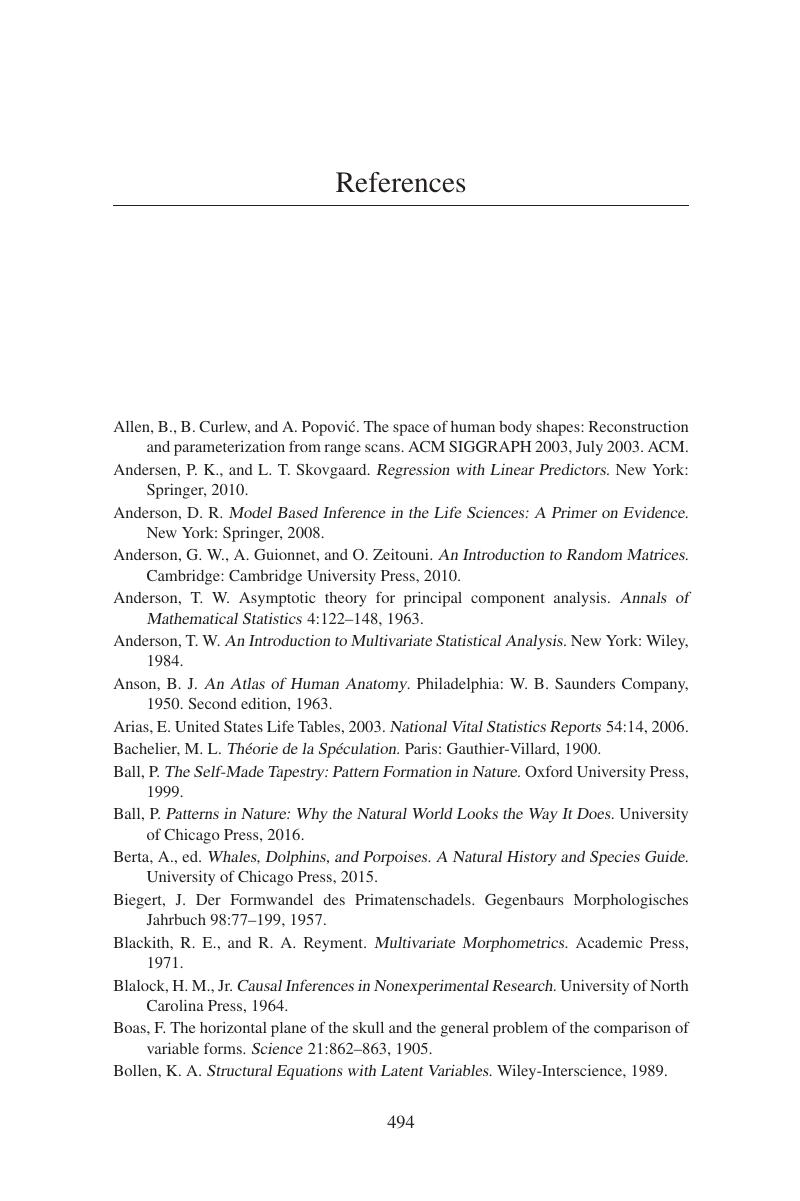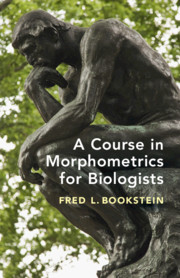Book contents
- Frontmatter
- Epigraphs
- Dedication
- Contents
- Preface
- 1 What This Book Is About
- 2 Getting Started: One or Two Measurements Only
- 3 Multiple Regression, in General and in Special Settings
- 4 Transition to Multivariate Analysis
- 5 Geometric Morphometrics: Its Geometry and Its Pattern Analysis
- References
- Index
- References
References
Published online by Cambridge University Press: 21 September 2018
- Frontmatter
- Epigraphs
- Dedication
- Contents
- Preface
- 1 What This Book Is About
- 2 Getting Started: One or Two Measurements Only
- 3 Multiple Regression, in General and in Special Settings
- 4 Transition to Multivariate Analysis
- 5 Geometric Morphometrics: Its Geometry and Its Pattern Analysis
- References
- Index
- References
Summary

- Type
- Chapter
- Information
- A Course in Morphometrics for BiologistsGeometry and Statistics for Studies of Organismal Form, pp. 494 - 505Publisher: Cambridge University PressPrint publication year: 2018



